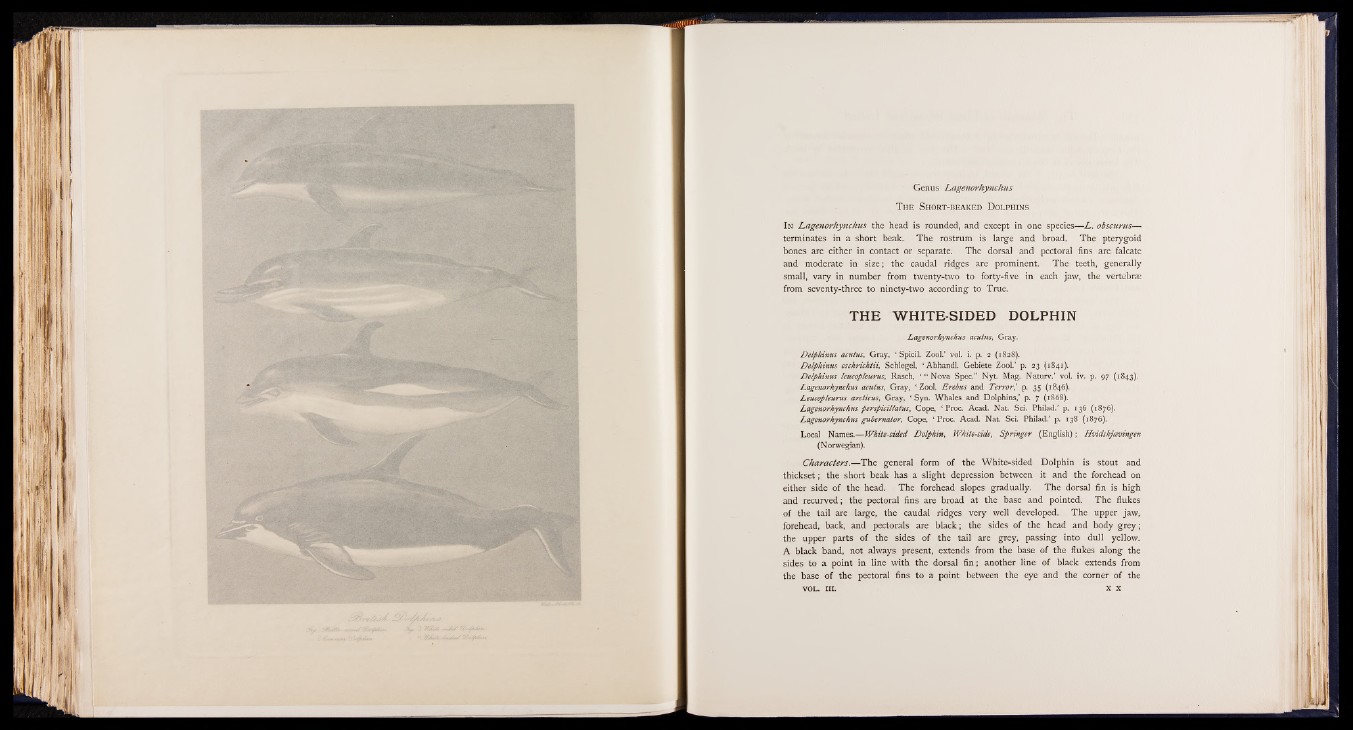
Genus Lagenorhynchus
T he S hort-beaked Dolphins
I n Lagenorhynchus the head is rounded, and except in one species— L . obscurus—
terminates in a short beak. The rostrum is large and broad. The pterygoid
bones are either in contact or separate. The dorsal and pectoral fins are falcate
and moderate in size; the caudal ridges are prominent. The teeth, generally
small, vary in number from twenty-two to forty-five in each jaw, the vertebrae
from seventy-three to ninety-two according to True.
T H E W H IT E -S ID E D D O L P H IN
Lagenorhynchus acutus, Gray.
Delphinus acutus, Gray, ‘ Spicil. Zool.’ vol. i. p. 2 (1828).
D elphinus esch rich tii, Schlegel, ‘ Abhandl. Gebiete Zool.’ p. 23 (1841).
Delphinus leucopleurus, Rasch, ‘ “ Nova Spec.” Nyt. Mag. Naturv.’ vol. iv. p. 97 (1843).
Lagenorhynchus acutus, Gray, ‘ Zool. Erebus and Terror,’ p. 35 (1846).
Leucopleurus arcticus, Gray, ‘ Syn. Whales and Dolphins,’ p. 7 (1868).
Lagenorhynchus persp icilla tu s, Cope, ‘ Proc. Acad. Nat. Sci. Philad.’ p. 136 (1876).
Lagenorhynchus gubem ator, Cope, ‘ Proc. Acad. Nat. Sci. Philad.’ p. 138 (1876).
Local Names.— W hite-sided D olphin, W hite-side, Sp ringer (English) ; Hvidskjcevingen
(Norwegian).
Characters.— The general form of the White-sided Dolphin is stout and
thickset; the short beak has a slight depression between it and the forehead on
either side of the head. The forehead slopes gradually. The dorsal fin is high
and recurved; the pectoral fins are broad at the base and pointed. The flukes
of the tail are large, the caudal ridges very well developed. The upper jaw,
forehead, back, and pectorals are black; the sides of the head and body grey;
the upper parts of the sides of the tail are grey, passing into dull yellow.
A black band, not always present, extends from the base of the flukes along the
sides to a point in line with the dorsal fin; another line of black extends from
the base of the pectoral fins to a point between the eye and the corner of the
VOL. III. x x